APRIL 8, 2020
 Monday, April 6, 2020 at 09:16AM
Monday, April 6, 2020 at 09:16AM 
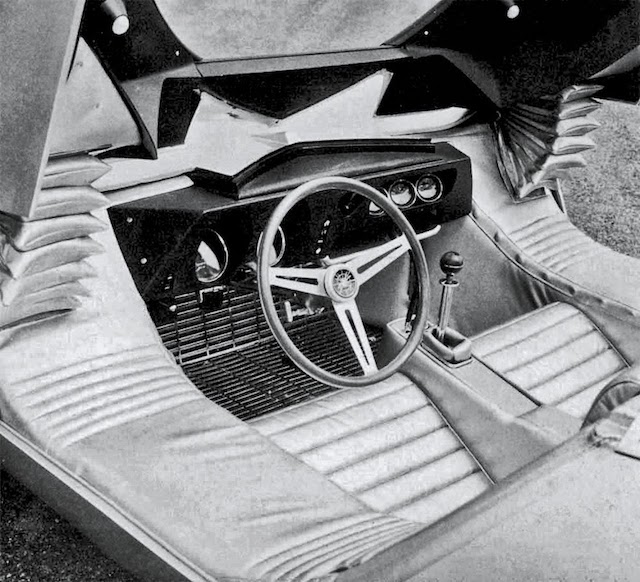 The entire cockpit canopy on the Monza GT raised up and forward.
The entire cockpit canopy on the Monza GT raised up and forward.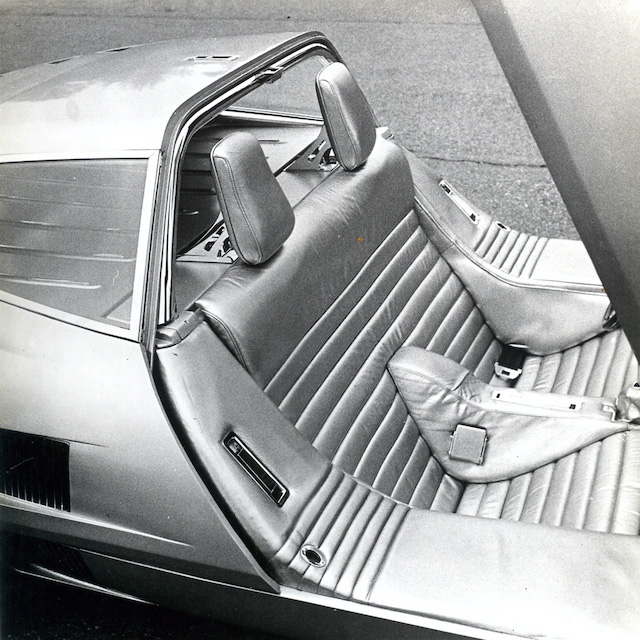 Another look inside at the Monza GT.
Another look inside at the Monza GT.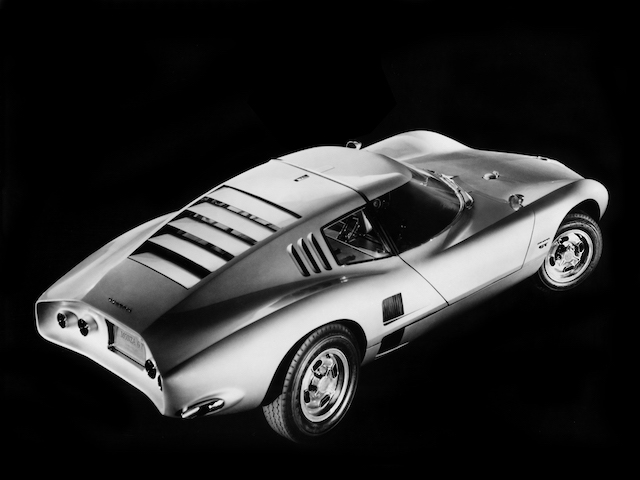 The overhead rear view of the Monza GT influenced many cars, including the Lamborghini Miura. (See Reader Mail -WG)
The overhead rear view of the Monza GT influenced many cars, including the Lamborghini Miura. (See Reader Mail -WG)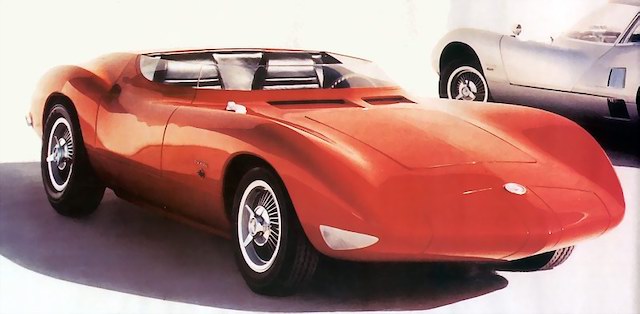 The Monza SS.
The Monza SS.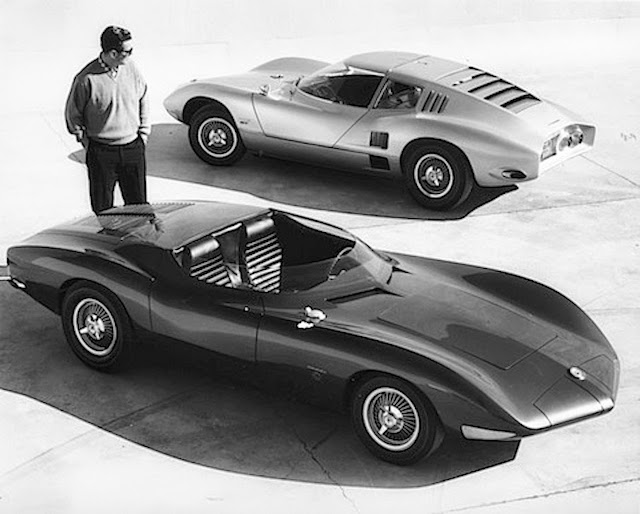 The Corvair Monza SS and GT concepts were two of the most stunning cars to come out of GM Styling during the Bill Mitchell era.
The Corvair Monza SS and GT concepts were two of the most stunning cars to come out of GM Styling during the Bill Mitchell era.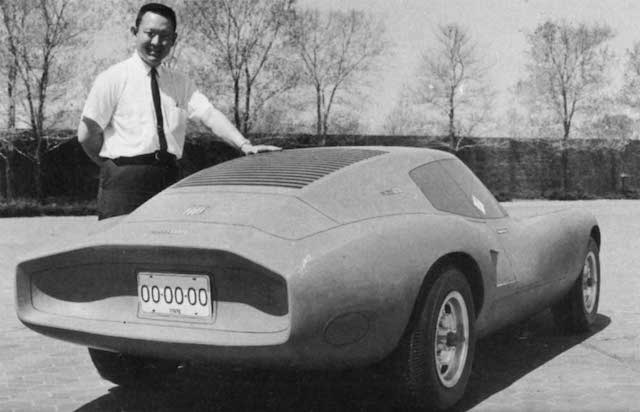 Famed GM designer Larry Shinoda stands by the clay model of the Monza GT concept in the GM Styling viewing courtyard, 1962.
Famed GM designer Larry Shinoda stands by the clay model of the Monza GT concept in the GM Styling viewing courtyard, 1962.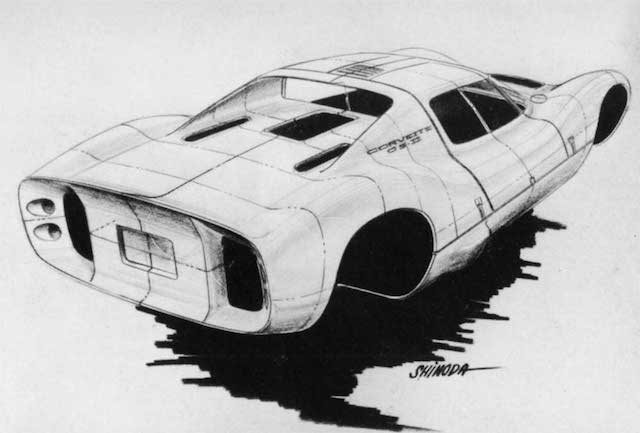 Larry Shinoda's sketch for the Chaparral 2D Coupe with its internal Chevrolet engineering designation - "Corvette GS II" - displayed prominently in 1965. The front end design of the Chaparral 2 was a direct lift from the Monza GT and SS. When the Chaparral 2D first saw the light of day, its resemblance to the Monza GT was unmistakable.
Larry Shinoda's sketch for the Chaparral 2D Coupe with its internal Chevrolet engineering designation - "Corvette GS II" - displayed prominently in 1965. The front end design of the Chaparral 2 was a direct lift from the Monza GT and SS. When the Chaparral 2D first saw the light of day, its resemblance to the Monza GT was unmistakable. Larry Shinoda's more detailed rendering of the Chaparral 2D Coupe, 1966. Jim Hall's relationship with Chevrolet Engineering and GM Styling has been well-documented. It was a mutually beneficial partnership.
Larry Shinoda's more detailed rendering of the Chaparral 2D Coupe, 1966. Jim Hall's relationship with Chevrolet Engineering and GM Styling has been well-documented. It was a mutually beneficial partnership.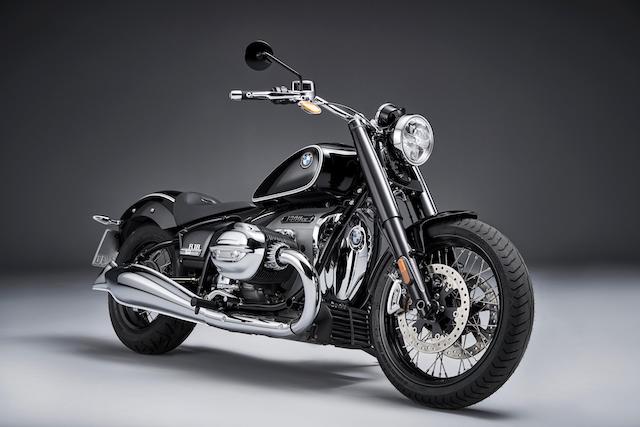
The new BMW R 18 "is all about motorcycling in its purest form: instinct over mind, technology not for its own sake but as a way of creating powerful emotion," according to BMW PR minions. The centerpiece of the new BMW R 18 is a completely new 2-cylinder boxer engine – the “Big Boxer.” The new “Big Boxer” ties in with the traditional boxer engines that were synonymous with motorcycles from Munich and Berlin-Spandau for around 70 years. With its OHV valve drive along with a separate engine and transmission housing, the new “Big Boxer” has the same structural features that distinguished the very first BMW Motorrad boxer engine, which at that time had laterally controlled valves. The highest-capacity twin-cylinder boxer engine ever to be used in motorcycle series production is an 1802 cc engine, resulting from a 107.1 mm bore and 100.0 mm stroke. The engine output is 91HP at 4,750 rpm. The maximum torque of 116 lbs-ft is already available at 3,000 rpm, with more than 110 lbs-ft available at any time from 2,000 to 4,000 rpm. The press release went on f-o-r-e-v-e-r in typical BMW fashion, but all you need to know is this: The base MSRP is $17,495; the First Edition starts at $19,870 (excludes tax and title fees, in addition to a Destination and Handling fee of $695).
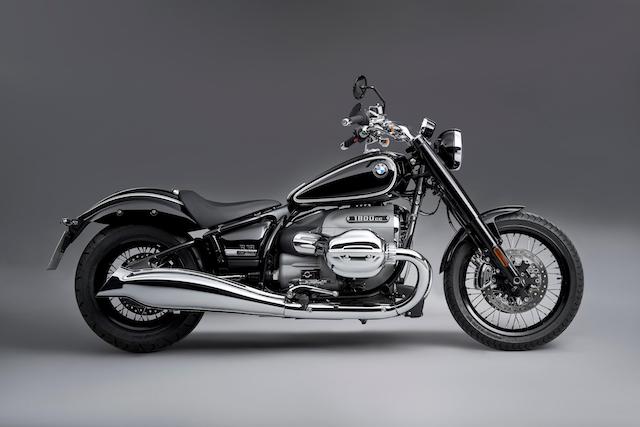
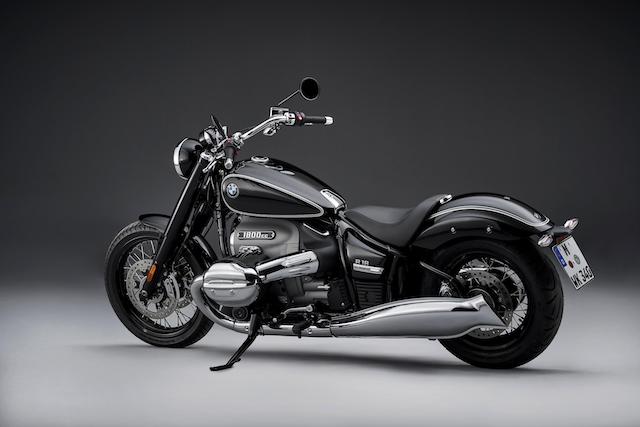
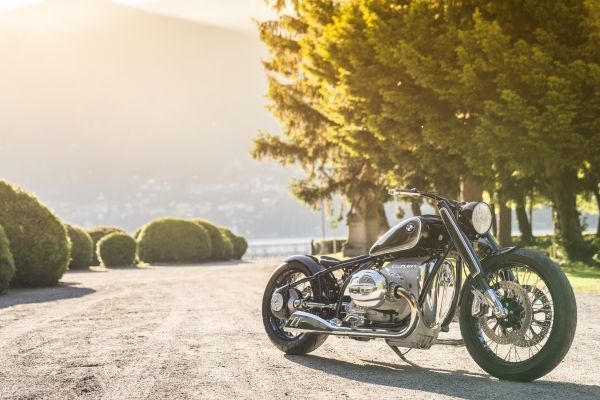 And for the record, it still doesn't look half as good as the BMW concept from 2018. Just sayin'.
And for the record, it still doesn't look half as good as the BMW concept from 2018. Just sayin'.
(Polestar images)
Precept is the Polestar concept created to showcase three key areas for the all-electric Swedish brand: sustainability, digital technology and design. The Precept was digitally revealed in February; the name “Precept” was chosen to emphasize the vehicle’s role in setting out Polestar’s intent as the contemporary electric performance brand. A precept "is a manifesto of things to come; a declaration. The car signifies an important milestone for Polestar as a standalone brand, describing a unique design philosophy that remains firmly embedded in Polestar’s brand values: pure, progressive and performance," according to Polestar PR minions. “People ask me all the time, ‘what is the future of Polestar?’, and of course we are not showing our future models just yet,” comments Thomas Ingenlath, Polestar CEO. “But Precept shows you where we will be heading – our design direction, our ambitions about sustainability and the great digital user experience we will bring with those future cars. Precept showcases our future, not as a fancy dream or something out of a sci-fi movie. This is our reality, to come.”


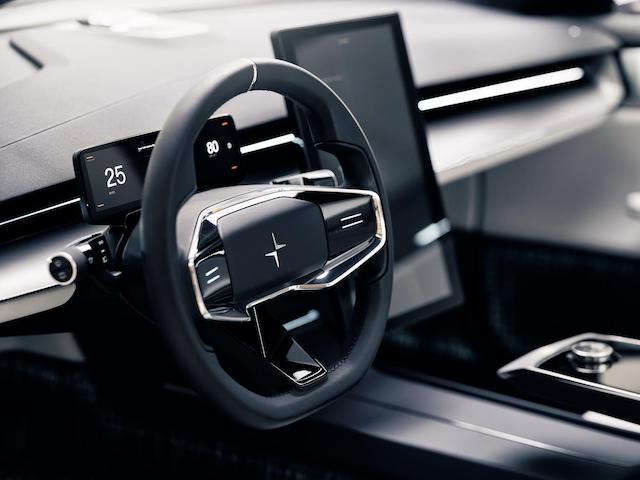

Editor's Note: Kudos to metro Detroit-based ad agency Doner for their new ad, ""When the Motor Stops," promoting the resilience and determination of the Motor City as it fights the COVID-19 pandemic. As reported by Julie Hinds in the Detroit Free Press, "the idea came from a young brand strategist, Alex DeMuth, (who said) 'Our agency can’t make ventilators or masks, but we can make content.'" The filming was done last Friday by one employee, who built a camera rig to fit on his car and drove through the city's deserted streets. He then edited it from home, while a copywriter recorded the narration from her closet. It is truly a great - and powerful - ad. -WG
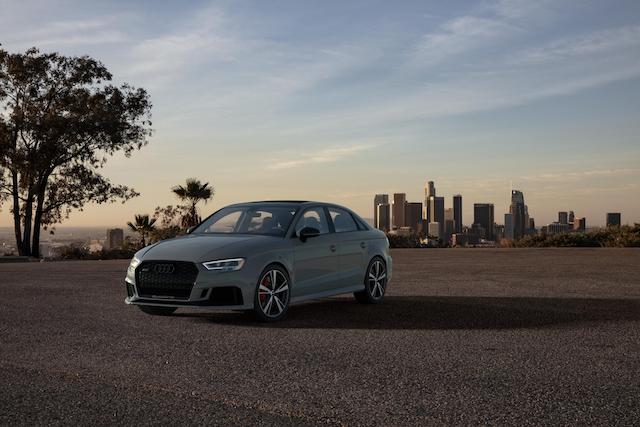
(Audi)
The Audi RS 3 will now be available in a special Nardo edition, which is arriving at dealerships now. The special edition RS 3 can reach an electronically-limited top speed of 174 mph, 19 mph higher than the standard RS 3. The standard RS fixed sport suspension allows for increased agility and enhanced cornering capabilities on and off the track, according to Audi. The RS 3 is equipped with a 2.5-liter TFSI® turbocharged engine that produces 394HP and 354 lb-ft of torque. A Sport exhaust system with black tips is also standard on the RS 3 Nardo edition. The RS 3 Nardo edition features Nardo Gray exterior paint with Black Optic exterior trim, staggered 19-inch 5-arm-blade design wheels in bi-color black finish, red brake calipers, a black rear lip spoiler, exterior mirror housings in gloss black, and black Audi rings and badges. The design selection interior includes RS embroidered floor mats, Alcantara® (!!!) knee pads with Crescendo Red stitching, Crescendo Red air vents and accent rings and seat belts with red edges. Audi Sport® Carbon inlays can also be found throughout the interior. Other standard stuff? The Audi virtual cockpit, MMI® Navigation plus, and MMI® touch with handwriting-recognition technology, Specific to the RS 3 is a screen that displays information on tire pressure (when equipped with the Dynamic plus package), horsepower/torque and a G-meter. When in manual shift mode and when approaching the engine redline, the tachometer acts as a shift light and changes colors, prompting the driver to upshift via the steering wheel paddle or gear selector lever. The Audi RS 3 Nardo edition has an MSRP of $59,900 plus destination, but only 200 will be available in the U.S.
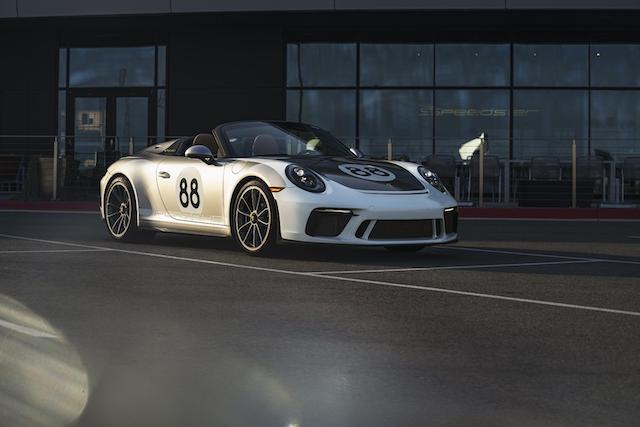
(Porsche images)
Porsche Cars North America Inc. and RM Sotheby’s will host a unique charitable auction with a money-can’t-buy package for Porsche enthusiasts. With proceeds, excluding taxes and fees, being donated to United Way Worldwide’s COVID-19 Community Response and Recovery Fund, the auction’s sole lot will be the last-ever 991 generation 911 to enter and pass down the serial production line within serial production at the Stuttgart-Zuffenhausen factory. The one-week auction in the U.S. will be held via RM Sotheby’s Online Only auction platform to adhere to social distancing guidelines without delaying the charitable fundraiser. The auction vehicle is a unique 911 Speedster, one of 1,948 examples, created to mark 70 years of Porsche sports cars. Porsche Design is supporting the auction with the creation of a bespoke addition to the package: a 911 Speedster Heritage Design Chronograph. The watch incorporates the vehicle’s historic design features, including a strap made in the exact same cognac leather as that applied to the interior of the sports car and a silver winding rotor that mirrors the car’s unique wheels. Created exclusively for 911 Speedster customers and made in Switzerland, the limited-edition and COSC-certified timepiece with flyback function will feature the chassis number of the final 991 generation 911, making it unique. The winning bidder and a guest will be invited to take a personal, behind-the-scenes tour of the Porsche AG Weissach development headquarters – including experiencing the test track – on a 1:1 basis with Dr. Frank-Steffen Walliser and Andreas Preuninger, heads of the 911 and GT model lines respectively. The car will also be accompanied by a one-of-a-kind book illustrating the assembly and completion of the last 991, including photographs and an original sketch by the Speedster design team. Finally, the handover of the vehicle will be hosted by Klaus Zellmer, President and CEO of PCNA, which will take place at a dedicated event in the U.S. Finished in GT Silver Metallic paint, the 911 Speedster remains unregistered, having covered just 20 delivery miles. It’s powered by a 4.0-liter, naturally aspirated flat six engine developing 502HP, connected to a six-speed manual gearbox. Accompanying the car is a letter of authenticity from Porsche confirming the chassis number applied to this car is indeed the last of the 991 generation to enter and pass down the serial production line. United Way Worldwide will be the beneficiary of the auction, with funds being donated to its COVID-19 Fund in the U.S. The auction follows PCNA’s ramping up to support Atlanta Public Schools (APS) in its U.S. hometown. Starting next week, employee volunteers from the North American headquarters of Porsche in Atlanta will help APS deliver daily meals to students at home who require nutrition assistance while the district is closed due to COVID-19. The auction will open for bidding on RM Sotheby’s Online Only platform at 11:00 am EDT on Wednesday, April 15, closing at 1:00 pm EDT on Wednesday, April 22. The 911 Speedster is offered without reserve, selling to the highest bidder. Potential bidders can find more information on the unique package being offered and the registration process at https://rmsothebys.com/en/auctions/0020.
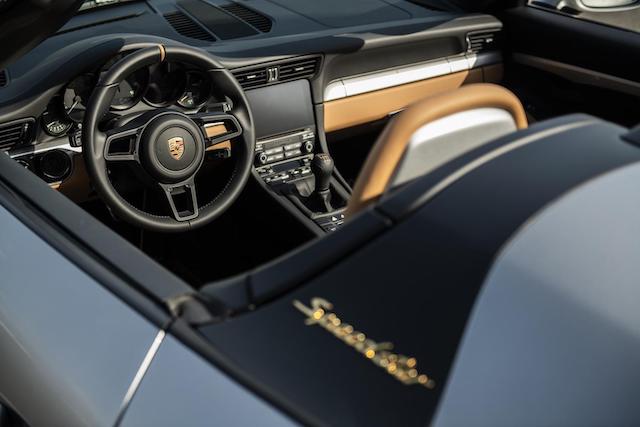

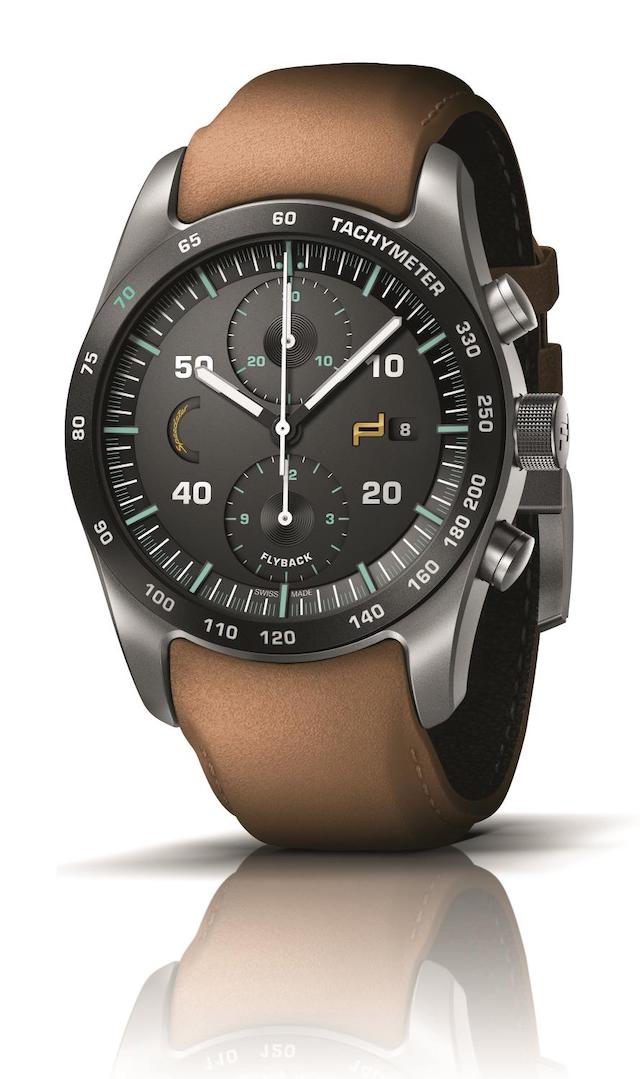
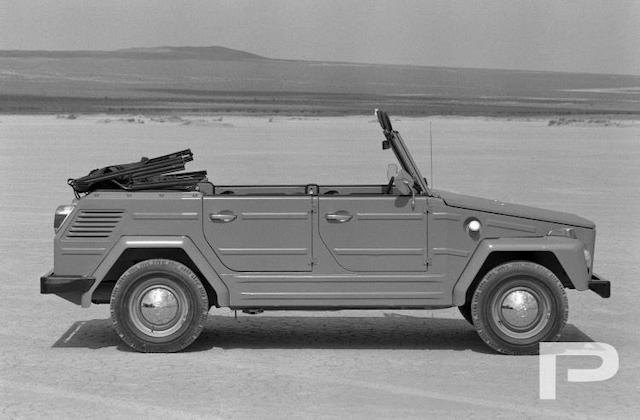
The following content and photos are © The Petersen Museum, and used with permission.
The first thing one might ask about this car is “what is it?” The simple answer is “it’s a Thing.” This was only true in the United States and Europe, however. In Mexico and South America, the simply shaped vehicle was known as the Safari, and in the United Kingdom it was sold as the Trekker. It was marketed in Italy as the Pescaccia (beastly fish).
Before it became a Thing, however, the vehicle was called the Type 181. The multi-purpose vehicle was developed for the West German military in the late 1960s based on the Type 182 Kübelwagen used during World War II. In fall 1969, Volkswagen began selling the Type 181 in Europe. Though the 181 was available as a consumer car, a large portion of the vehicles were purchased by NATO. Later, Volkswagen transferred production of the 181 from Germany to Mexico, giving it new territory in which to roam.
In 1973, Volkswagen unleashed the 181 as “The Thing” into the United States, the same year that the Arab Oil Embargo began. As the United States imported much of its oil from the Middle East, the Embargo greatly reduced the amount of oil available in the United States, which increased the price of gasoline and caused fuel shortages. The Embargo spurred the United States government to institute regulations designed to reduce the fuel consumption of commercial and consumer vehicles. In response, automobile companies like Ford began programs to design vehicles that were sleek, aerodynamic, and, therefore, fuel-efficient. The Thing was none of these things.
The Volkswagen had a simple, utilitarian profile. Its sloping hood was not shaped by the desire to funnel air with as little disruption as possible over the top of the car, but by the need to see over hilltops when climbing steep terrain. Its corrugated sides helped give the bodywork strength. The Thing’s doors were removable, as was the top. The windshield folded down. Yet, it was only advisable to utilize this feature if one wanted to make goggles mandatory driving attire, as John Lamm discovered during his road test of the car in the November 1973 issue of Motor Trend Magazine.
The average Thing was available in three colors, Pumpkin Orange, Sunshine Yellow, or Blizzard White. Just in case you couldn’t figure out what type of vehicle this was, an optional “The Thing” decal was also available. The Basic Thing came equipped with many things including rugged commercial style suspension, a “12-volt electrical tap,” and a front that looked disconcertingly like a back. This might have been because, the Thing, like the Volkswagen Beetle, had a rear mounted engine. Without an engine, the car’s front could be used to store essential items like a spare tire, the gas tank, and the Thing’s removable side curtains. On the dashboard there was little located beside the 12-volt electric plug. Like many other cars, the Thing had a steering wheel, a shifter, and a glovebox. The Thing’s glovebox, however, did not have a door. Only a radio was mounted to the right of the steering wheel. As Lamm observed, “the seats go along with the theme, stark, but practical.”
The heart of the beast was a 96.7 cubic-inch four-cylinder 46-horsepower engine from a Volkswagen Beetle. The Thing’s transmission was also from a Beetle, as was the chassis. In fact, the Thing and the Beetle had such similar layouts that Steve Smith wrote in the March 1973 issue of Motor Trend if “you just unfasten the 18 bolts per side you can physically swap bodies.” In an era of plush pickups, metalflaked customs, and psychedelic shag carpeted vans, the Thing offered intrepid owners a special kind of Spartan style. As suggested by its multiple monikers, the Thing was a hard vehicle to define. “It can’t be just a station wagon, a four-wheel drive pickup, or a dune buggy,” as Lamm noted, “so it walks a fine line in between.” This ambiguity nonetheless meant that with some alterations the Thing could become many other things.
With the addition of a hardtop, glass windows, upgraded floor mats, cabin insulation, a “good (read it loud) stereo,” and a powerful Porsche engine, the Thing could become “an all-purpose city-country car,” according to Lamm. With more luxurious upgrades the Thing, Lamm mused, could be transformed into “a modern 1930s phaeton." Motor Trend procured a Thing and transformed it into “an off-road and hunting vehicle,” outfitting it with upgraded suspension, horns, extra lights, brush guards, and new wheels and tires. The camo print camper also included extra accessories like “a winch, Citizen’s Band radio, a roll-cage, and extra gas tanks.”
Like the Jeep or Land Rover, the Thing could be driven on the street and through the brush. Like a corrugated metal dune buggy, the Thing could slide through the sand. It could be a roadster or converted to a hard top SUV. The multi-purpose vehicle could be a Wild Thing or a Mild Thing. Importantly, the Thing offered this range of functionality for $2750, a price almost $1000 lower than that of a Land Rover or Jeep at the time. Unlike dune buggies that were sold as conversion kits, the Thing was ready to hit the sand right from the dealer. So, when someone asks you what this car is, you really can say that it was “just the Thing.”
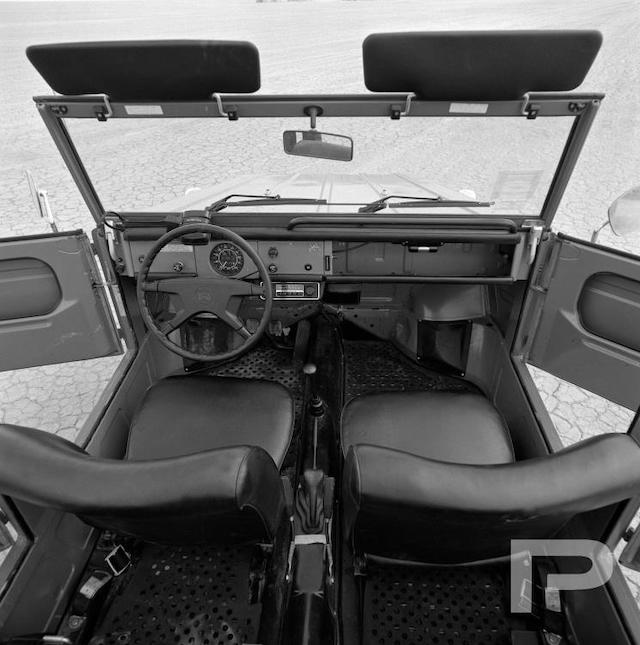
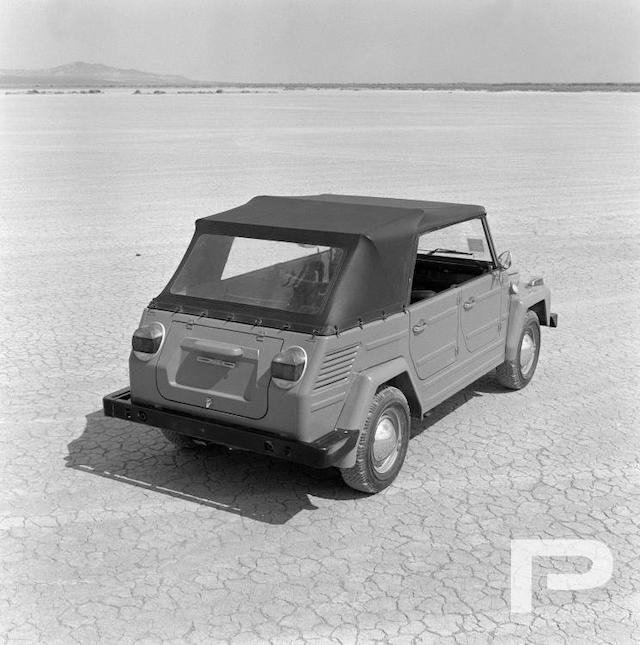
AE Song Lyrics of the Week:
Call you up in the middle of the night
Like a firefly without a light
You were there like a blowtorch burning
I was a key that could use a little turning
So tired that I couldn't even sleep
So many secrets I couldn't keep
Promised myself I wouldn't weep
One more promise I couldn't keep
It seems no one can help me now
I'm in too deep there's no way out
This time I have really led myself astray
Runaway train, never going back
Wrong way on a one-way track
Seems like I should be getting somewhere
Somehow I'm neither here nor there
Can you help me remember how to smile?
Make it somehow all seem worthwhile
How on earth did I get so jaded?
Life's mystery seems so faded
I can go where no one else can go
I know what no one else knows
Here I am just a-drownin' in the rain
With a ticket for a runaway train
And everything seems cut and dried
Day and night, earth and sky
Somehow I just don't believe it
Runaway train, never going back
Wrong way on a one-way track
Seems like I should be getting somewhere
Somehow I'm neither here nor there
Bought a ticket for a runaway train
Like a madman laughing at the rain
A little out of touch, a little insane
It's just easier than dealing with the pain
Runaway train, never going back
Wrong way on a one-way track
Seems like I should be getting somewhere
Somehow I'm neither here nor there
Runaway train, never coming back
Runaway train, tearing up the track
Runaway train, burning in my veins
I run away but it always seems the same
"Runaway Train" - Soul Asylum, from the album "Grave Dancers Union" (1992).* Watch the video here.
*Soul Asylum lead singer Dave Pirner wrote this song, which is about depression. It took him a few years to complete the song; at first it had different lyrics with a refrain of "laughing at the rain," which he knew was too similar to the Neil Sedaka song "Laughter In The Rain." Pirner had the tune in his head, but it wasn't until he went through some dark times that the runaway train/depression metaphor hit him, and he wrote the lyrics in a single sitting. The music video for "Runaway Train" featured photographs and names of missing children in the style of a public service announcement. At the end of the video, lead singer Dave Pirner appeared and said, "If you've seen one of these kids, or you are one of them, please call this number" before a missing children telephone helpline number appeared. The video was edited for use outside the US to include photos and names of missing children from wherever the video was to be shown. The video drew awareness to the problem and was instrumental in reuniting several children with their families. The message of the video became bigger than that of the song, and the Soul Asylum singer embraced that message. In our interview with Dave Pirner, he explained: "I really got closer to an issue that I was concerned about and open to being concerned about, and thrust into a position where I was dealing with the Polly Klaas situation. There's so much raw emotion and so much reality to a situation like that that you can't exploit it." (Courtesy of songfacts.com)




